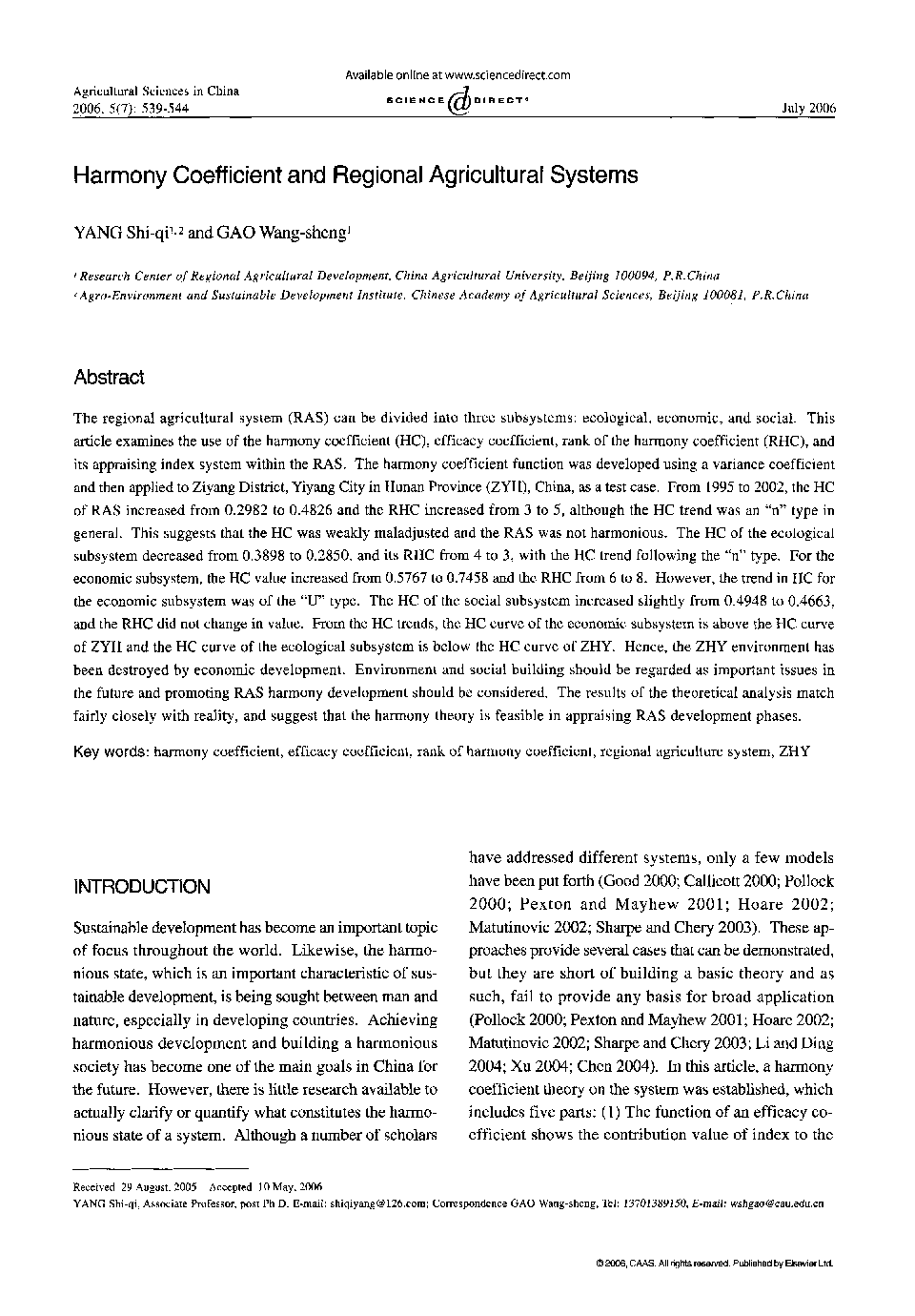| Article ID | Journal | Published Year | Pages | File Type |
|---|---|---|---|---|
| 4491068 | Agricultural Sciences in China | 2006 | 6 Pages |
The regional agricultural system (RAS) can be divided into three subsystems: ecological, economic, and social. This article examines the use of the harmony coefficient (HC), efficacy coefficient, rank of the harmony coefficient (RHC), and its appraising index system within the RAS. The harmony coefficient function was developed using a variance coefficient and then applied to Ziyang District, Yiyang City in Hunan Province (ZYH), China, as a test case. From 1995 to 2002, the HC of RAS increased from 0.2982 to 0.4826 and the RHC increased from 3 to 5, although the HC trend was an “n” type in general. This suggests that the HC was weakly maladjusted and the RAS was not harmonious. The HC of the ecological subsystem decreased from 0.3898 to 0.2850, and its RHC from 4 to 3, with the HC trend following the “n” type. For the economic subsystem, the HC value increased from 0.5767 to 0.7458 and the RHC from 6 to 8. However, the trend in HC for the economic subsystem was of the “U” type. The HC of the social subsystem increased slightly from 0.4948 to 0.4663, and the RHC did not change in value. From the HC trends, the HC curve of the economic subsystem is above the HC curve of ZYH and the HC curve of the ecological subsystem is below the HC curve of ZHY. Hence, the ZHY environment has been destroyed by economic development. Environment and social building should be regarded as important issues in the future and promoting RAS harmony development should be considered. The results of the theoretical analysis match fairly closely with reality, and suggest that the harmony theory is feasible in appraising RAS development phases.
